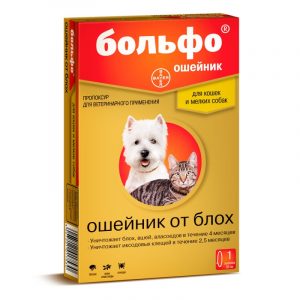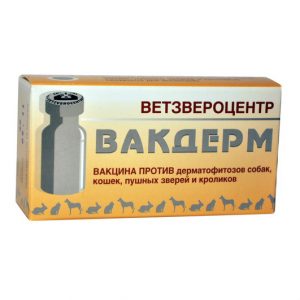Description
Pharmacological action
Pharmacotherapeutic group of the drug: hormonal drugs for systemic use. Insulin is a hormone that is produced by 3 cells of the pancreatic Largenhans islets. Caninsulin has a specific ability to regulate carbohydrate metabolism in dogs and cats, enhances the penetration of glucose into cells and promotes its conversion into glycogen. Caninsulin is a specific, long-acting, antidiabetic agent for dogs and cats. When introduced into the animal’s body, the drug lowers blood glucose, reduces its excretion in the urine, and eliminates the effects of diabetic coma. In addition to the hypoglycemic effect, Caninsulin causes an increase in glycogen stores in the liver and muscles, increased fat formation, stimulated peptide synthesis, and decreased protein expenditure. The action of the drug aimed at lowering blood glucose in dogs, after subcutaneous administration, reaches a maximum after 6-8 hours and lasts 14-24 hours. In cats, it reaches a maximum after 1.5 hours and lasts 5-12 hours. The drug is excreted in the urine through the kidneys. According to the degree of exposure to the body, Kaninsulin belongs to the group of low-hazard substances (hazard class 4 according to GOST 12.1.007-76). In recommended doses, it does not have cumulative, embryotoxic, teratogenic and allergenic properties.
Indications
Insulin-dependent diabetes mellitus in dogs and cats.
Contraindications
Increased individual sensitivity to caninsulin. It is forbidden to administer the drug intravenously. Do not use in animals with hypoglycemia (low blood glucose).
Special instructions
Animals must be on a strict diet during treatment. Caninsulin should be used with caution in obese animals. It is not recommended to use insulin simultaneously with tetracycline group antibiotics (especially oxytetracycline), sulfa drugs, glucocorticosteroids and progestogens. It is necessary to adjust the dose of insulin when changing the nature of feeding and the diet of the animal, as well as with infectious diseases, surgeries, diseases of the liver and kidneys, during pregnancy. With prolonged use of insulin, it is recommended to change the injection site.
Composition
1 ml of caninsulin contains 40 IU of highly purified porcine insulin (30% in the form of amorphous zinc insulin and 70% in the form of crystalline zinc insulin).
Dosage and Administration
Caninsulin is administered to dogs and cats subcutaneously. Intramuscular administration is also possible. The dose of caninsulin and the intervals between injections are set individually for each animal. When dosing insulin, it is necessary to round the weight of the animal down to the nearest whole kilogram, and the calculated dose of insulin to round down to the nearest whole unit. Shake the contents of the vial very carefully before use. Caninsulin is administered to dogs 1 to 2 times a day. The starting daily dose of caninsulin for dogs includes an initial dose equal to 1 UNITS of insulin per 1 kg of animal weight and an additional dose depending on the weight of the dog (with an animal weighing up to 10 kg, 1 UNITS of insulin per animal is added, from 10 to 12 kg – 2 IU per animal, from 12 to 20 kg – 3 IU per animal, over 20 kg – 4 IU per animal). If caninsulin is administered to the dog 1 time per day, it is recommended to feed the animal before the morning injection of insulin in the volume of 1/3 – 1/4 daily servings. The rest of the daily portion is given 6 to 8 hours after the administration of the drug. If caninsulin is administered to the dog 2 times a day, then the first feeding is carried out before the morning insulin injection in the amount of 1/2 daily portion. The rest of the feed is given 12 hours after the injection of the drug (before the introduction of an evening dose of insulin). The starting daily dose of caninsulin for cats is 0.25 – 0.5 units per 1 kg of animal weight. Cats with diabetes mellitus need to be injected with caninsulin 2 times a day, i.e. the starting daily dose of insulin should be divided into 2 injections (morning and evening). Moreover, for cats, the maximum daily dose of insulin in the first 2 to 3 weeks of treatment should not exceed 2 units per animal. The first feeding of the cat is carried out before the morning injection of caninsulin in the amount of 1/2 daily portion. The rest of the feed is given 12 hours after the injection of the drug (before the introduction of an evening dose of insulin). To determine the correct maintenance dose of insulin for an animal, blood glucose should be regularly measured. The dose of the drug is not recommended to be changed more than 1 time in 3 to 4 days. In this case, the dose of insulin must be selected so that it does not differ from the previous dose by more than 10%, both in the direction of decreasing, and in the direction of increasing the dose. It is necessary to ensure that in the drinker of a patient with a diabetes mellitus animal there is always clean drinking water.
Side effects of
Allergic reactions are possible in hypersensitive animals. Hypoglycemia (with large doses of insulin, skipping or delayed feeding, heavy physical activity, against the background of infections or diseases, especially with diarrhea or vomiting), which is accompanied by increased sweating, palpitations, muscle tremors, hunger, agitation, anxiety. Hyperglycemia and diabetic acidosis (with low doses of insulin, skipping injections, poor diet, and infections), accompanied by drowsiness, thirst, and loss of appetite. With prolonged use of insulin, lipodystrophy develops (atrophy or hypertrophy of subcutaneous fat).
dosage form
injection




